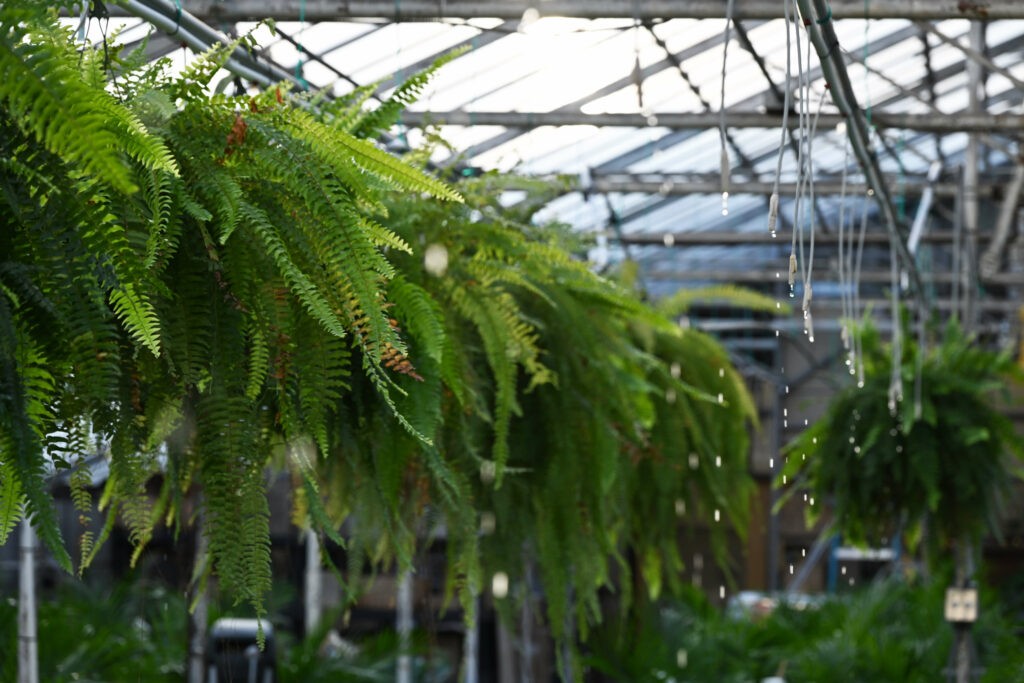
International Plant Appreciation Day is April 13 and is the perfect time to refresh your plant parent skills and make sure you are correctly caring for your houseplants.
Are your plants getting enough water? Too much or too little sunlight? Did they get neglected during the winter months?
We’re here to help.
Guide to caring for houseplants
Water correctly
Each plant has different watering needs. Watering all plants at one time is not ideal – it’s important to pay attention to your plant to determine if it needs watering. Be sure to research your specific plant to determine how regularly it needs watering, but a good way to test most plants is by placing your finger in the soil. If the top inch is dry, it likely needs water.
Be sure not to give a plant too much water. This can cause root rot. Water only until the soil feels damp, but not overly saturated.
Also, be sure to water only on the soil and not on plant leaves. Doing so can increase a plant’s risk of sunburn.
This is the “traditional” way of watering plants. However, you can also place your plant in a tray with water and let the roots drink up how much water they want/need. Which method you should use depends on your plant type and your preference.
Ensure the correct sun exposure
Every plant has unique light requirements, however, most indoor plants prefer having bright, indirect light. This means placing them in a spot that will receive sun, but not directly, for 6-8 hours a day.
If your home doesn’t have any good spots for getting natural light, you can invest in LED growing lights. Plants will need to be in this light source for 16-18 hours a day if they are receiving no natural light.
In the warmer months, especially summer, be careful with how much exposure your plants get to the sun. Don’t place any plants in or near a south-facing window during the summer as they can get burnt.
Regulate temperature & humidity
A typical house plant’s ideal temperature is about 75°F. The most important component with temperature, however, is keeping the area where your plant is housed within a consistent temperature range.
Don’t place plants where they can get a draft or receive direct heat – so avoid placement near windows that are frequently opened, doors, vents and heaters.
As for humidity, most plants, especially tropical ones, prefer 40-50% humidity. There are a couple of ways you can increase the humidity in your plant’s environment:
- Buy a humidifier and place it near your plants
- Keep plants clustered together – the water evaporating from the soil will increase the humidity around all of the plants.
- Place plants on trays with pebbles and water – The water will evaporate and increase the humidity around the plant.
Fertilize
Fertilizer isn’t just for your outdoor garden. In the warmer months, regularly give fertilizer to your houseplants according to the instructions on your specific fertilizer and the type of plant(s) you have.
Keep plants clean
Houses get dusty and there can be a lot of unseen particles in the air. Dusty/dirty leaves can block a plant from getting the necessary sunlight.
To clean them, regularly wipe their leaves with a damp paper towel.
Lookout for pests
While you are cleaning your plants, keep an eye out for any bugs. Check the leaves and stems thoroughly to ensure there are none hiding. If you see any, immediately remove them either directly, with a stream of water, or by wiping them off.
Penn State Extension offers guidance on how to identify which common houseplant pest problem you might be dealing with HERE.
Repot when needed
Has your plant outgrown its container? If your plant looks crowded in its pot, don’t be afraid to repot it to a bigger container. Spring, when plants are actively growing and no longer dormant, is the best time to repot plants.
When repotting your plant, carefully remove the plant and its roots and place in a new, clean container with fresh soil. Immediately water the plant to help it with its acclimation process.
Consider moving houseplants outside
Once the threat of frost, freezing temperatures, and snow has passed, it is a great time to send your plants on vacation. Even though placing your houseplants outside exposes them to more elements out of your control, it can be good for your plants who have been “cooped up” all winter.
Be sure to bring your plants back inside before it gets too hot!
If you follow these steps, you can have a happy and thriving indoor jungle!
























